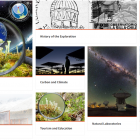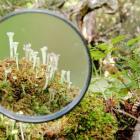History of the Exploration
The history of the exploration of the microcosm and macrocosm in Chile is grounded in two factors: (1) the special attributes of unique territories at the southern and northern extremes of Chile (i.e., the subantarctic archipelagoes in the region of Cape Horn, and the Atacama Desert), and (2) the vision and determination of individual researchers and their institutions to discover and implement natural laboratories in these regions.
Switch between the microcosm and macrocosm perspectives by clicking on the circles below.
The original virtual exhibition includes the option to switch between the microcosm and the macrocosm within the individual chapters (see screenshot below).
Here we present the subchapters one after the other.
Serendipity in the Origin of “Ecotourism with a Hand Lens”
In March 2000, Chilean conservation biologist and philosopher Ricardo Rozzi embarked on an expedition to the Cape Horn Islands at the southern end of the Americas, guiding a group of bryologists led by Bernard Goffinet in the search of Splachnaceae or “dung mosses” that Goffinet thought might grow on the bones of whales beached on the southern shores of the island. The team experienced several storms while navigating on the Maroba, a tiny fishing boat.
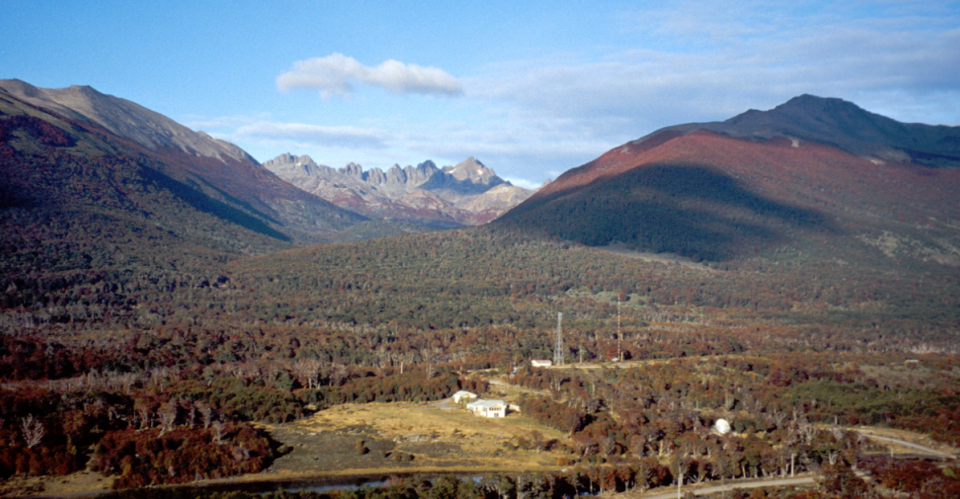
Figure 1. Watershed of the Róbalo River, protected by Omora Park, Puerto Williams, Chile. Photograph by Ricardo Rozzi, n.d.
Figure 1. Watershed of the Róbalo River, protected by Omora Park, Puerto Williams, Chile. Photograph by Ricardo Rozzi, n.d.
© Fundación Omora. Used by permission.
The copyright holder reserves, or holds for their own use, all the rights provided by copyright law, such as distribution, performance, and creation of derivative works.
Researchers were determined to find these dung mosses and began a long hike across a vast peatland, and in their excitement, Ricardo Rozzi became separated from the group and fell into one of the numerous scattered pools. He started to sink. Rozzi felt that this would lead to a natural death. While going down he became fascinated by the astonishing diversity of mosses around the pond. Rozzi thought, “If as a biologist I have not paid proper attention to the magnitude of the diversity of these tiny plants before this moment, I wonder whether decision-makers or teachers in Chile had appreciated this miniature biodiversity.”

Figure 2. Subantarctic Magellanic forests grow from the sea level to the treeline on the mountains in the Cape Horn Biosphere Reserve. Photograph by Paola Vezzani, n.d.
Figure 2. Subantarctic Magellanic forests grow from the sea level to the treeline on the mountains in the Cape Horn Biosphere Reserve. Photograph by Paola Vezzani, n.d.
© Fundación Omora. Used by permission.
The copyright holder reserves, or holds for their own use, all the rights provided by copyright law, such as distribution, performance, and creation of derivative works.
Fortunately, Bernard Goffinet and the team found Ricardo Rozzi in the swamp after a couple of hours, just before he completely disappeared. He survived! However, the image of the exuberant diversity of mosses became fixed in Rozzi’s mind, and upon returning to his lab, he systematically began a bibliographic review of bryophytes in Chile. Additionally, with Goffinet, William Buck, and other bryologists associated with Omora Park, a series of floristic inventories was initiated in the Cape Horn archipelagoes (Figures 1 and 2). And it hit them, because they discovered that the subantarctic Magellanic ecoregion constitutes a world hotspot of moss and liverwort (bryophytes or non-vascular plants) diversity.

Figure 3a. Map used in discussions with the Chilean Environmental Agency (CONAMA), The Nature Conservancy (TNC), and other organizations to define biodiversity conservation priorities of ecoregions in South America and Chile during the 1990s. The red square highlights the subantarctic Magellanic ecoregion, which was initially categorized as “unclassified.” This map was published with modifications in Dinerstein et al. (1995).
Figure 3a. Map used in discussions with the Chilean Environmental Agency (CONAMA), The Nature Conservancy (TNC), and other organizations to define biodiversity conservation priorities of ecoregions in South America and Chile during the 1990s. The red square highlights the subantarctic Magellanic ecoregion, which was initially categorized as “unclassified.” This map was published with modifications in Dinerstein et al. (1995).
© Fundación Omora. Used by permission.
The copyright holder reserves, or holds for their own use, all the rights provided by copyright law, such as distribution, performance, and creation of derivative works.
Several years earlier, Ricardo Rozzi, who is now the director of the Cape Horn International Center (CHIC), had participated in committees charged with identifying priority sites for conservation in Chile and Latin America. The criteria used at the time and still used today are exclusively based on vertebrate and vascular plant diversity. Looking back now, Rozzi realized that following these criteria, non-vascular plants had been systematically overlooked in this decision-making process. Consequently, at the end of the 1990s, the subantarctic Magellanic ecoregion was classified by the International Union for the Conservation of Nature (IUCN) as unknown and of low priority for biodiversity conservation (Figure 3a).
With the epiphany gained as Rozzi thought he was meeting his swampy death, he and other researchers worked frantically to quantify this overlooked diversity of mosses. They quickly found that over 5 percent of the bryophyte species known to science grow in the archipelagoes of Cape Horn, on less than 0.01 percent of the planet’s terrestrial surface. The austral region contains the highest number of species of mosses and liverworts recorded in Chile (Figure 3b). Moreover, in Cape Horn there are more species of non-vascular plants than of vascular plants, sharply contrasting with the ratios of vascular/non-vascular plants found in lower latitude regions (Figure 3b). This discovery stimulated their proposal to “change our lenses” for assessing biodiversity.
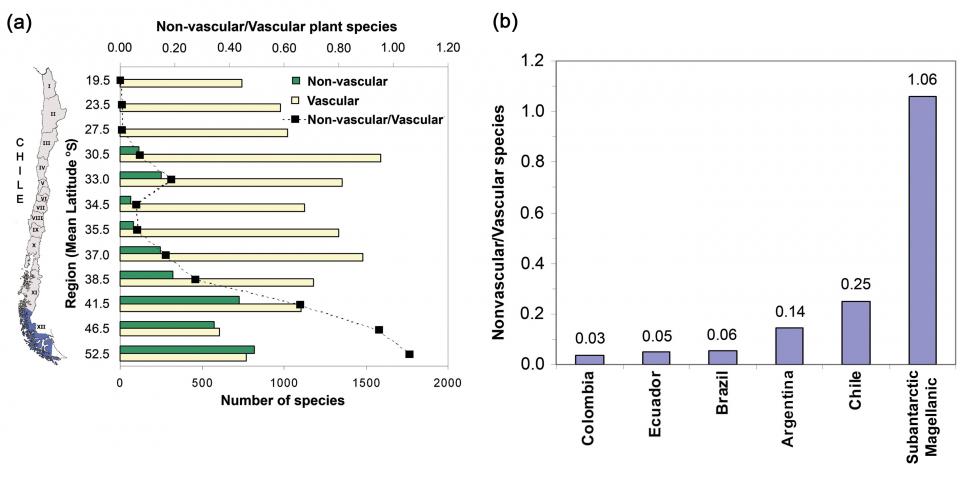
Figure 3b. In Chile, the number of species of bryophytes increases with latitude, and reaches a maximum in the subantarctic Magellanic ecoregion, where it outnumbers vascular plants (a; figure modified from Rozzi et al. (2008). The species richness of non-vascular plants (bryophytes) in the subantarctic Magellanic ecoregion contrasts with lower latitude regions, especially in tropical countries, where its proportion is minimal as compared to vascular plants (b).
Figure 3b. In Chile, the number of species of bryophytes increases with latitude, and reaches a maximum in the subantarctic Magellanic ecoregion, where it outnumbers vascular plants (a; figure modified from Rozzi et al. (2008). The species richness of non-vascular plants (bryophytes) in the subantarctic Magellanic ecoregion contrasts with lower latitude regions, especially in tropical countries, where its proportion is minimal as compared to vascular plants (b).
© Fundación Omora. Used by permission.
The copyright holder reserves, or holds for their own use, all the rights provided by copyright law, such as distribution, performance, and creation of derivative works.
Taxonomic groups and ecoregions shape the “lenses” through which biodiversity is assessed and conserved. Patterns of species richness and endemism used to identify priority areas for biodiversity conservation are strongly biased by our differential knowledge of taxonomic groups. At the end of the twentieth century, assessments of global priorities for conservation relied on the concentration of diversity and endemism of vertebrates and vascular plants. Plant conservation focused almost exclusively on vascular flora, while diversity patterns of non-vascular flora were poorly documented and marginally considered. For this reason, Ricardo Rozzi and other researchers proposed to “change the lenses,” and invited conservation biologists to consider not only large organisms but also the smallest organisms, particularly in certain types of habitats. For instance, if the aim is to assess the species richness of intertidal zones in the coasts of the austral archipelagoes, it will be necessary to search for algae, and not only for vascular plants. Analogously, if the aim is to assess high-latitude floristic diversity, it will be inappropriate to base inventories merely on vascular plants, but it will be necessary to also include the non-vascular ones. This second analogy is not as obvious, but it is essential for properly appreciating the floristic diversity of the subantarctic and Antarctic regions.
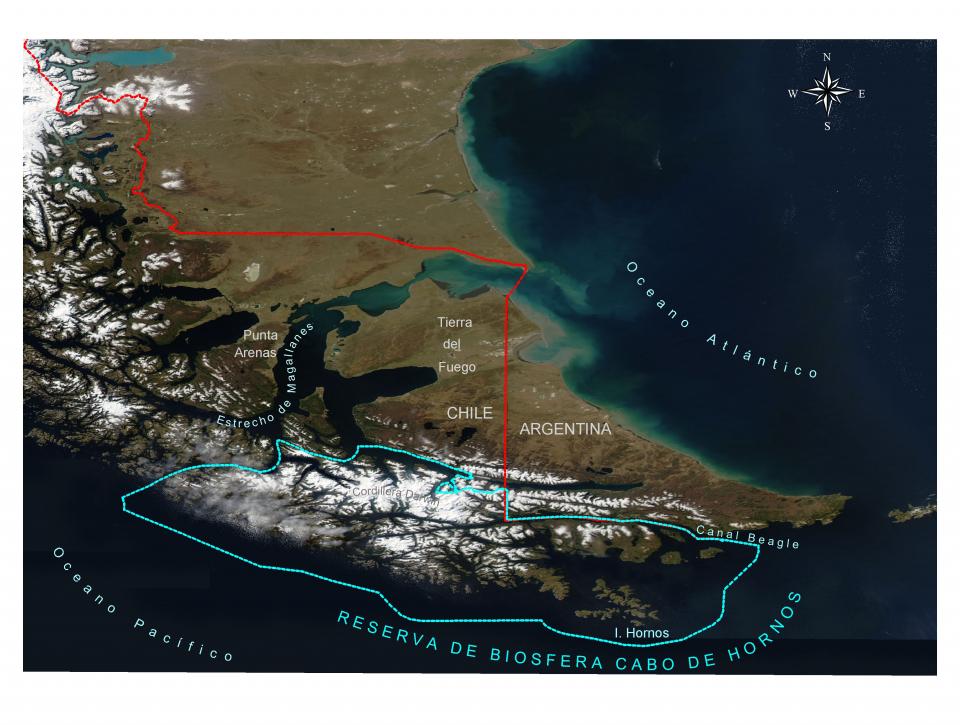
Figure 3c. Satellite image of the Cape Horn Biosphere delimited by the light blue-dotted line. Located south of Tierra del Fuego, it is the southernmost protected area of the Americas, and the largest one in the temperate and subpolar zones of the Southern Hemisphere. Figure modified from Rozzi et al. (2006 a, b).
Figure 3c. Satellite image of the Cape Horn Biosphere delimited by the light blue-dotted line. Located south of Tierra del Fuego, it is the southernmost protected area of the Americas, and the largest one in the temperate and subpolar zones of the Southern Hemisphere. Figure modified from Rozzi et al. (2006 a, b).
© Fundación Omora. Used by permission.
The copyright holder reserves, or holds for their own use, all the rights provided by copyright law, such as distribution, performance, and creation of derivative works.
In 2000, the Omora Park research team began floristic inventories and analyses of diversity patterns of this frequently overlooked taxonomic group in a remote and striking geographical area of evergreen broadleaf forests and tundra, which has led us to novel and challenging theoretical and practical questions. The team demonstrated that non-vascular and vascular plants display opposite latitudinal species-richness gradients, and argued that conservation should focus on regional patterns of biome-specific biodiversity-indicator groups, which are often left out of global assessments. In 2005, the research team succeeded in conserving the high diversity of bryophytes of the subantarctic Magellanic ecoregion, which provided the central argument for the creation of the UNESCO Cape Horn Biosphere Reserve (Figure 3c). This is the largest biosphere reserve in southern South America. For the first time in Chile, and the world, a protected area was designated based on the diversity of mosses and liverworts, organisms that up until now have rarely been perceived and valued in the region, country, and conservation community worldwide (Figures 4a and 4b).

Figure 4a. In the Cape Horn Biosphere Reserve, dung mosses belong to a particular family of non-vascular plants that grow on peatland or in forests. Photograph by Adam Wilson, 2010.
Figure 4a. In the Cape Horn Biosphere Reserve, dung mosses belong to a particular family of non-vascular plants that grow on peatland or in forests. Photograph by Adam Wilson, 2010.
© Fundación Omora. Used by permission.
The copyright holder reserves, or holds for their own use, all the rights provided by copyright law, such as distribution, performance, and creation of derivative works.
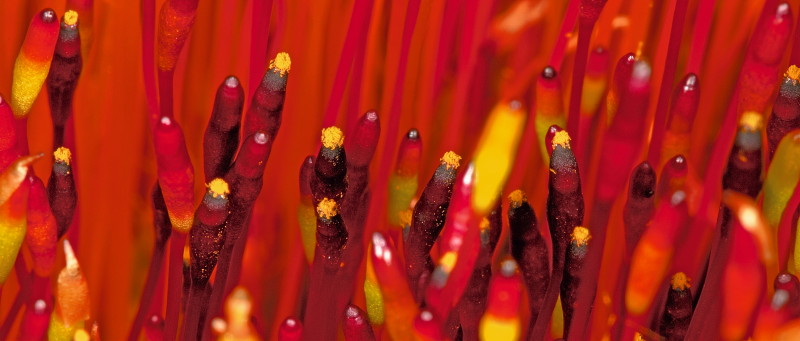
Figure 4b. Dung mosses have colorful sporophytes to attract flies that disperse the spores of the mosses. Photograph by Adam Wilson, 2010.
Figure 4b. Dung mosses have colorful sporophytes to attract flies that disperse the spores of the mosses. Photograph by Adam Wilson, 2010.
© Fundación Omora. Used by permission.
The copyright holder reserves, or holds for their own use, all the rights provided by copyright law, such as distribution, performance, and creation of derivative works.
The success of the first milestone inspired the Omora Park research team to generate two broader applications for the conservation of bryophytes. First, the team invented a novel educational and tourism activity they called “Ecotourism with a Hand Lens” to foster appreciation of the beauty, diversity, and ecological relevance of the “miniature forests” of bryophytes, lichens, and invertebrates. Since 2005, with a magnifying glass in hand, children, teachers, decision-makers, and the general public have gained a new lens to observe, value, and care for the most diverse groups of organisms with whom we coinhabit high-latitude regions (Figures 5a and 5b). Second, beyond the Cape Horn region, the research team has argued that for designing effective conservation strategies, it is essential to broaden the set of groups of organisms that are considered for conservation policies and practices in different regions of the world. To that end, from the extreme southern tip of Chile, Ricardo Rozzi and a team of researchers have proposed a “metaphorical hand-lens” to better investigate, value, and care for the world’s biodiversity.
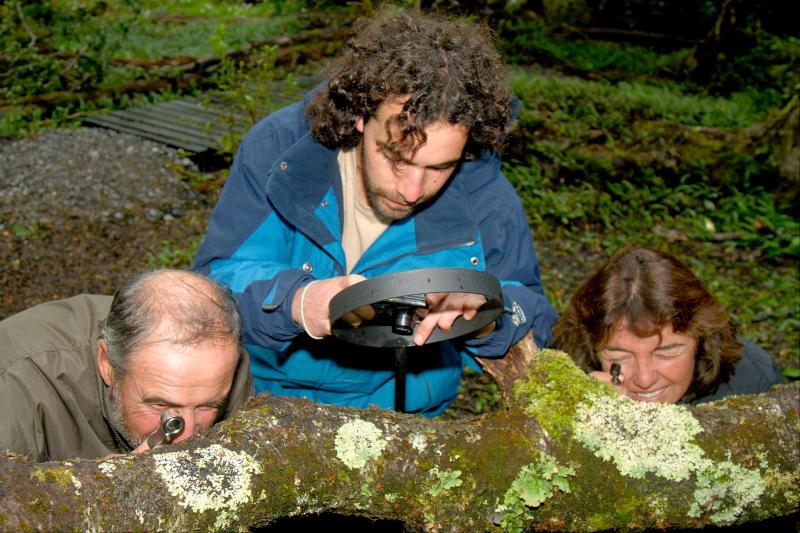
Figure 5a. A family is led by a graduate student guide at the “miniature forests of Cape Horn” interpretive trail, Omora Park. The activity of “Ecotourism with a Hand Lens” helps visitors to appreciate the diversity, beauty, and ecological relevance of lichens and mosses. Photograph by Adam Wilson, January 2010.
Figure 5a. A family is led by a graduate student guide at the “miniature forests of Cape Horn” interpretive trail, Omora Park. The activity of “Ecotourism with a Hand Lens” helps visitors to appreciate the diversity, beauty, and ecological relevance of lichens and mosses. Photograph by Adam Wilson, January 2010.
© Fundación Omora. Used by permission.
The copyright holder reserves, or holds for their own use, all the rights provided by copyright law, such as distribution, performance, and creation of derivative works.
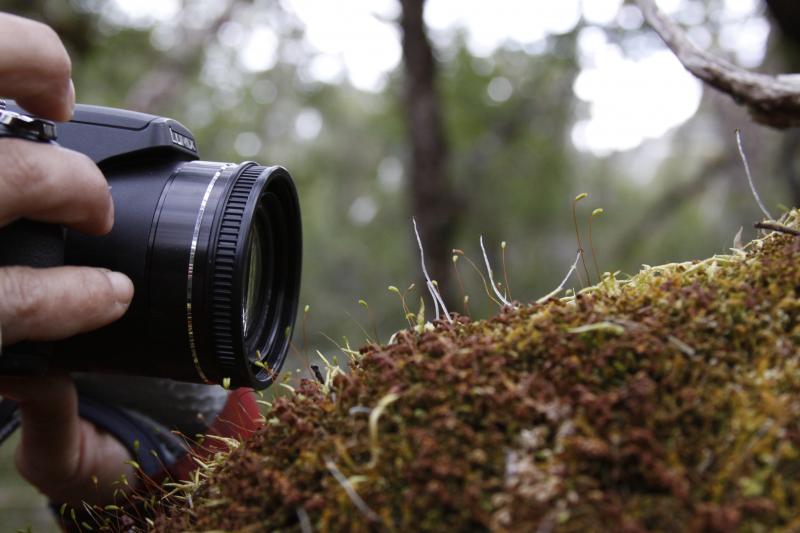
Figure 5b. Close-up of a macro lens used by a visitor during their participation in the activity of “Ecotourism with a Hand Lens.” Photograph by Paola Gonzalez, Omora Park, January 2016.
Figure 5b. Close-up of a macro lens used by a visitor during their participation in the activity of “Ecotourism with a Hand Lens.” Photograph by Paola Gonzalez, Omora Park, January 2016.
© Fundación Omora. Used by permission.
The copyright holder reserves, or holds for their own use, all the rights provided by copyright law, such as distribution, performance, and creation of derivative works.

From the Beginnings of Modern Astronomy to the Major Ground-Based Observatories
Modern astronomy in Chile started with the installation of two telescopes on Cerro Santa Lucía in Santiago during the middle of the nineteenth century. This became the basis of the Chilean National Observatory, which was later integrated into the Astronomy Department of the Universidad de Chile. Around the turn of the twentieth century another observatory was established on Cerro San Cristóbal. The first explorations of the Chilean North for astronomical observations were done early in the twentieth century, but major astronomical observatories were established in the 1960s. Several regions between Santiago and the Norte Grande all the way to inland Iquique were investigated for suitable sites, with promising locations found and explored near La Serena, Copiapó, and Calama. The northern sites are characterized by very favorable weather conditions with many clear nights and a stable atmosphere, which results in sharper images.
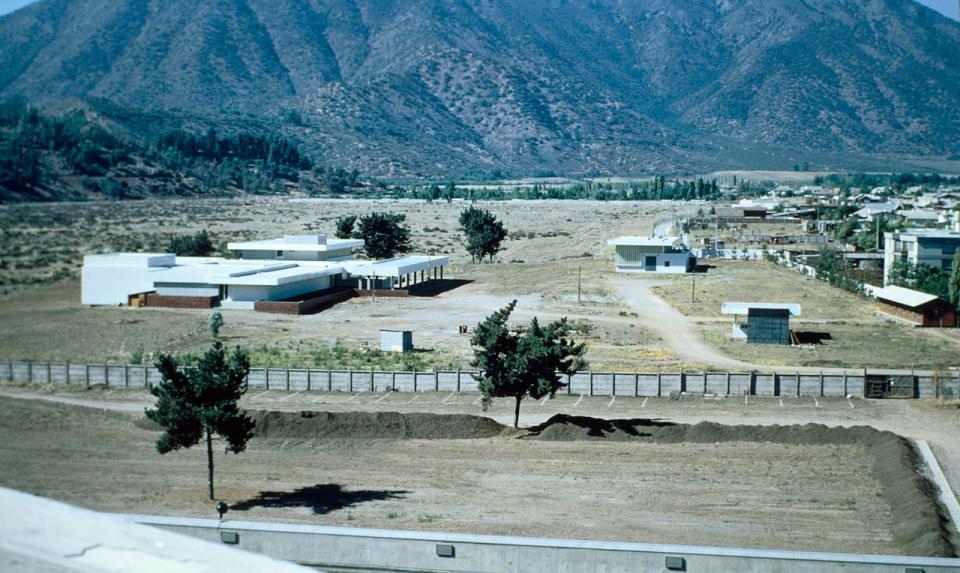
View of the Vitacura headquarters from the roof of the adjacent United Nations building: the main building of HQ is to the left of the middle of the photograph. Photograph by Eric Maurice, December 1968.
View of the Vitacura headquarters from the roof of the adjacent United Nations building: the main building of HQ is to the left of the middle of the photograph. Photograph by Eric Maurice, December 1968.
Courtesy of ESO.
Click here to view source.
 This work is licensed under a Creative Commons Attribution 4.0 International License.
This work is licensed under a Creative Commons Attribution 4.0 International License.
In 1963, the European Southern Observatory (ESO) officials were guests of the American Association of Universities for Research in Astronomy (AURA) in the north of Chile. They were looking for a place to build a new observatory. They had done an extensive search for places in South Africa but soon found out that in the north of South America there is a country with wonderful skies for astronomical observation. After the visit and following the inauguration of the Cerro Tololo Inter-American Observatory (CTIO) operated by AURA, ESO decided to place its first observatory on a mountain called Cinchado Norte, north of La Serena, following the excellent sites described by Jürgen Stock. The mountain was locally also known as La Silla and the ESO observatory on this site was inaugurated in 1969, the same year the nearby Las Campanas Observatory of the Carnegie Institution of Washington was established. ESO also established a small office in the Vitacura suburb of Santiago.
La Silla quickly became a large observatory with the installation of many telescopes. The ESO 3.6-meter telescope towered over the site, and in the 1980s two more unique telescopes were added. The Swedish-ESO Submillimeter Telescope (SEST) with a 15-meter dish was the first submillimeter telescope in the Southern Hemisphere and started operations in 1987. SEST was able to see what our eyes and optical telescopes cannot. It was specially designed to observe what we call the cold universe: molecular clouds and dust, objects that are obscure for our eyes but which become bright at submillimeter wavelengths. The ESO’s New Technology Telescope (NTT), which represented a step toward active mirror control, was inaugurated in 1989. The NTT already encompassed many features that became characteristic of the eight-meter telescopes of ESO’s Very Large Telescope (VLT).
Several years of site selection preceded the construction of the VLT. Finally, Cerro Paranal near the town of Taltal in the coastal range of the Atacama Desert was selected due to an incomparable percentage of clear nights per year (more than 90 percent). The design of the VLT enables the combination of the four unit telescopes in a single telescope as an interferometer. This means that the information from the four eight-meter telescopes can be combined as if they were a single telescope of more than one hundred meters in diameter. Since in astronomy the bigger the telescope the higher the image resolution, the VLT Interferometer (VLTI) produces images with unprecedented detail. The first unit telescope started operations in 1999, and the following years saw the addition of a new telescope until the completion in 2002. In addition, four movable 1.8-meter “auxilliary telescopes” were added to be used in the interferometer. The VLT is among the most productive astronomical telescopes to date. At the same time, the Gemini South eight-meter telescope was built by a multinational collaboration on Cerro Pachon near CTIO in 2000, and two 6.5-meter telescopes on Las Campanas started operating in 2000 and 2002.
The original virtual exhibition includes an interactive gallery of images. View the images on the following pages.
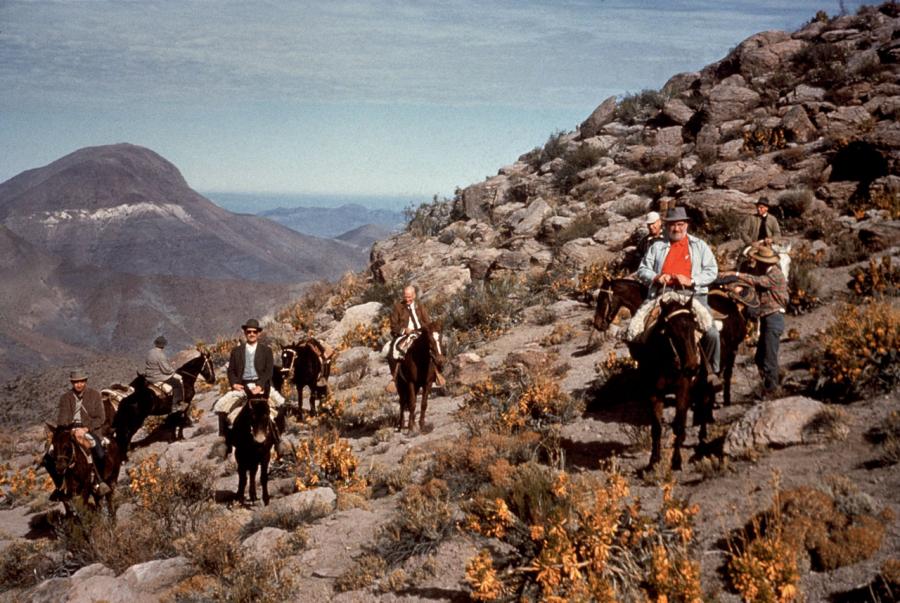
Courtesy of ESO/F. K. Edmondson.
Click here to view source.
 This work is licensed under a Creative Commons Attribution 4.0 International License.
This work is licensed under a Creative Commons Attribution 4.0 International License.
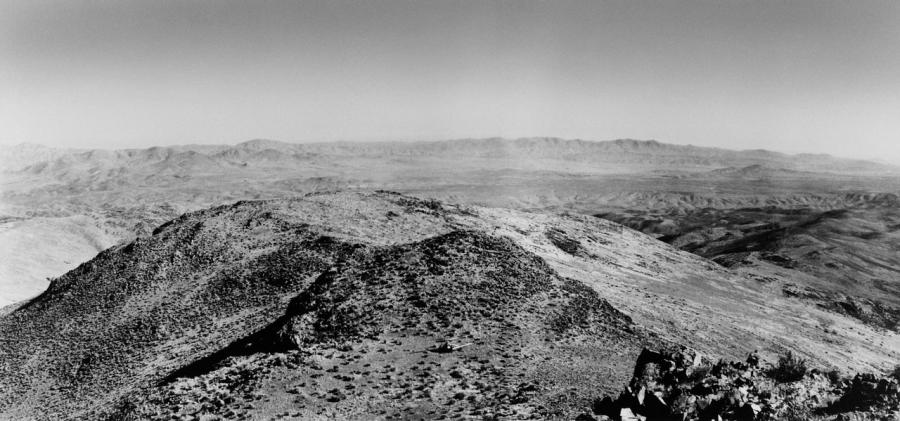
Courtesy of ESO.
Click here to view source.
 This work is licensed under a Creative Commons Attribution 4.0 International License.
This work is licensed under a Creative Commons Attribution 4.0 International License.

Courtesy of ESO.
Click here to view source.
 This work is licensed under a Creative Commons Attribution 4.0 International License.
This work is licensed under a Creative Commons Attribution 4.0 International License.
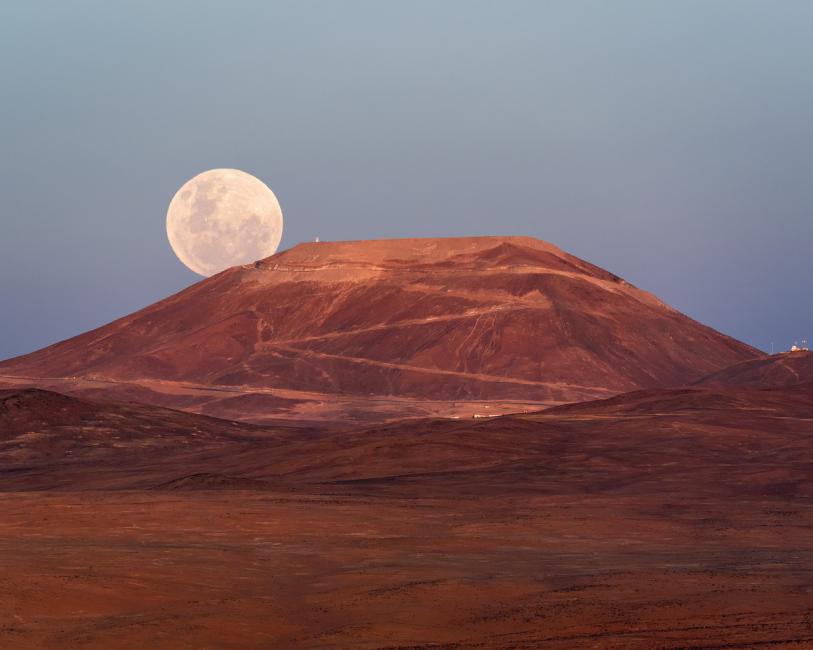
Courtesy of G. Hüdepohl (atacamaphoto.com)/ESO.
Click here to view source.
 This work is licensed under a Creative Commons Attribution 4.0 International License.
This work is licensed under a Creative Commons Attribution 4.0 International License.




While the optical and infrared observatories are placed on sites with stable atmospheres and many clear nights, other ground-based observations profit from the small amounts of water vapor in the atmosphere. A dry place like the Atacama Desert combined with a high-altitude plateau is ideal for observations at submillimeter wavelengths. This is the reason the plain of Chajnantor, at an altitude of over five thousand meters above sea level, was chosen for two Japanese millimeter antennas in 2004. The Atacama Large Millimeter/submillimeter Array (ALMA) now occupies most of the Llano de Chajnantor. The same site hosts the 12-meter antenna of the Atacama Pathfinder Experiment (APEX), which was constructed by the Max Planck Institute for Radio Astronomy in Bonn and the Onsala Space Observatory, and has been operated by ESO since 2005. ALMA, which started operations in 2011, is a collaboration of Europe (ESO member states), North America (United States and Canada), and East Asia (Japan, Taiwan, South Korea) and operates 66 antennas of apertures of 7 meters and 12 meters. The ALMA Offices are installed on the ESO office compound in Vitacura. ALMA is most sensitive to cold objects in space and hence it observes many molecules and cold dust. Like the VLTI, ALMA can also combine its 66 antennas as if they were a single one of 16 kilometers in diameter. The resulting high-resolution images have allowed scientists to identify the places where exoplanets are forming around young stars. Several smaller experiments operated on Chajnantor and its surrounding peaks over the years.
The next generation of telescopes is already being built in the Atacama Desert. The Giant Magellan Telescope (GMT) will observe the southern skies from the Las Campanas mountain with seven eight-meter mirrors mounted together as a single telescope. It is expected to become operational in the late 2020s. ESO’s Extremely Large Telescope (ELT), planned to start operating in 2027, is being constructed on Cerro Armazones near the Paranal Observatory. It will have an aperture of 39 meters diameter and will become the largest optical and infrared telescope in the world.
Another new observatory is being planned between Paranal and Armazones: the southern portion of the Cherenkov Telescope Array (CTA). The observatory is composed of 14 12-meter telescopes and 37 4-meter telescopes, which will be installed in the coming years to observe radiation created in Earth’s atmosphere by ultrahigh energy particles coming from space. CTA will observe the most energetic and violent events in the universe.
Chile has become the primary location for astronomical observatories due to its clear and stable atmosphere, the availability of high-altitude plateaus, and the dark skies. The Chilean North by now hosts most of the major ground-based optical and submillimetric observatories in the Southern Hemisphere.
Switch between the microcosm and macrocosm perspectives by clicking on the circles above.
- Previous chapter
- Next chapter




